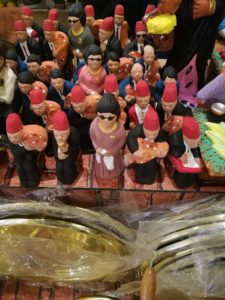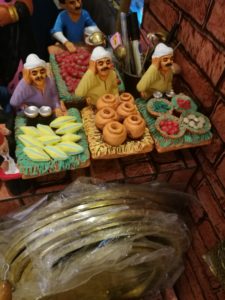The Nay “Musical instrument from Egypt”
 A simple reed pipe flute with six holes in front and one for the thumb. Other woodwind instruments include the Moroccan oboe (rhaita), the Persian oboe (zumas), the Turkish-style mey and three-part flute the kaval.
A simple reed pipe flute with six holes in front and one for the thumb. Other woodwind instruments include the Moroccan oboe (rhaita), the Persian oboe (zumas), the Turkish-style mey and three-part flute the kaval.
It is an end-blown flute that figures prominently in Middle Eastern music. In some of these musical traditions, it is the only wind instrument used. The ney has been played continuously for 4,500–5,000 years, making it one of the oldest musical instruments still in use.
The Persian ney consists of a hollow cylinder with finger-holes. Sometimes a brass, horn, or plastic mouthpiece is placed at the top to protect the wood from damage, and to provide a sharper and more durable edge to blow at. The ney consists of a piece of hollow cane or giant reed with five or six finger holes and one thumb hole. Modern neys may be made instead of metal or plastic tubing. The pitch of the ney varies depending on the region and the finger arrangement. A highly skilled ney player, called neyzen, can reach more than three octaves, though it is more common to have several “helper” neys to cover different pitch ranges or to facilitate playing technically difficult passages in other dastgahs or maqams.
Famous Egyptian Artist

Umm Kulthum was known for her extraordinary vocal ability and style, and she was one of the greatest and most influential singers of the 20th century, where she has sold over 80 million records worldwide. Umm Kulthum is considered a national icon in her native Egypt and is dubbed as The voice of Egypt and Egypt’s fourth pyramid. Umm Kulthum remains as the most revered legendary Arab singer.
 Music has been an integral part of Egyptian culture since antiquity. The Bible documents the instruments played by the ancient Hebrews, all of which are correlated in Egyptian archaeology. Egyptian music probably had a significant impact on the development of ancient Greek music, and via the Greeks was important to early European music well into the Middle Ages. The modern music of Egypt is considered as a core of Arabic music and Oriental music as it has been a source for or the main influence on other regional styles. The tonal structure of Oriental Arabic music is defined by the maqamat, loosely similar to Western modes, while the rhythm of Arabic music is governed by the Eqaa, standard rhythmic modes formed by combinations of accented and unaccented beats and rests.
Music has been an integral part of Egyptian culture since antiquity. The Bible documents the instruments played by the ancient Hebrews, all of which are correlated in Egyptian archaeology. Egyptian music probably had a significant impact on the development of ancient Greek music, and via the Greeks was important to early European music well into the Middle Ages. The modern music of Egypt is considered as a core of Arabic music and Oriental music as it has been a source for or the main influence on other regional styles. The tonal structure of Oriental Arabic music is defined by the maqamat, loosely similar to Western modes, while the rhythm of Arabic music is governed by the Eqaa, standard rhythmic modes formed by combinations of accented and unaccented beats and rests.
Upper Egyptian “Peasants”
Selling while singing is a tradition in the upper egypt that you can actually enjoy as a foreigner, Don’t miss visiting Luxur and Aswan so you can enjoy this tradition which is fruitful to experience.
Also if you missed out experiencing food, music and culture dont miss watching those photos 🙂
If you like those cute clay gifts and you think you want to experience Egypt, What are you waiting for, come by, and fly by then write me:)love ya’ll.Mostafa


